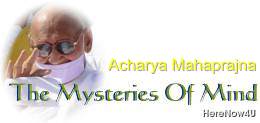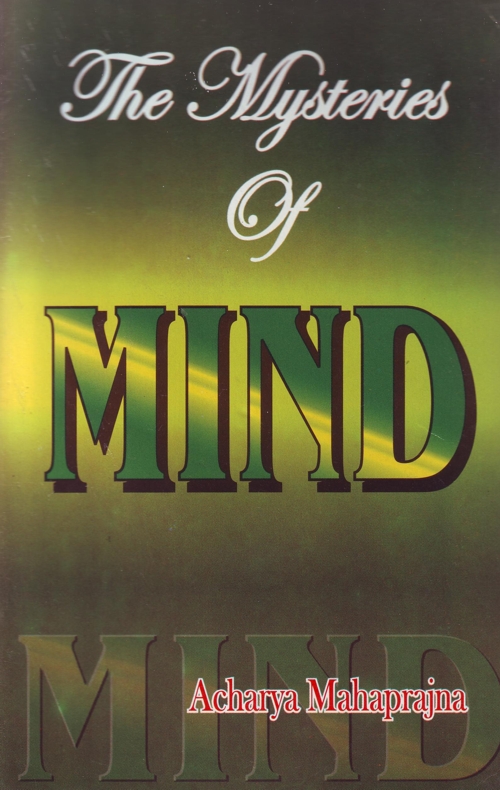
- One who seeks emancipation brings his wanton sense organs under control.
- One who seeks liberation should keep his eyes fixed on his ideal and should not allow his mind to be attached to things opposed to enlightenment.
- Do not allow yourself to be an instrument and keep the substantial means you adopt pure.
- Once you are in a position to distinguish between what is desirable and what is not you will automatically dissociate yourself from the latter.
- Retracing from the past and renunciation of the future:
- Renunciation of the future results in samvara (the stopping of the influx of actions into the soul)—then the purification of the soul from the effects of past actions.
- Rehabilitation of consciousness.
- Renunciation is the second assault on the effects of the Unconscious.
- Samyama (moral discipline) exists between pratyakhyana (retracing from the past) and samvara.
- Moral discipline leads to the achievement of renunciation and results in samvara—it is an exercise in the achievement of samvara.
- Aspects of the practice of moral discipline:
- Abstinence from the objects of sense-pleasure.
- If by chance you come into contact with the objects of sense-pleasure, do not allow attachments to influence you.
There are two sources of human existence:
- Energy
and - Consciousness.
The former illumines the somatic and extra-somatic atmospheres in the midst of which human beings live. Consciousness can be utilized only by means of energy, it does not require energy for its own existence, but it needs energy in order that it may be of some use to us. The human brain too cannot be of any use to us except through vital energy. Our sense organs are associated with consciousness, but they are of no use to us unless they are activated by the vital force. Consciousness cannot be operative unless it has been energised in a wholesome way.
The development of energy runs parallel to the development of consciousness. It can take place only through pratyakhyana or renunciation. The first consequence of the enlightenment caused by discernment is the spirit of renunciation. The discernment of an enlightened person gives him the capacity to distinguish between what is beneficial and what is not. The term pratyakhyana means to give up. This is brought about by the application of energy.
Willpower is one of the forms in which energy manifests itself. When we see one person sitting and another walking, we naturally ask as to what makes the first walk and the second sit. Why are not both either walking or sitting? The answer is that it is the will power, which makes them behave in their own way. Human conduct is governed by the human will. Sitting, speaking, keeping silent, eating, resting, etc. are governed by the will.
Once there was a lot of philosophic thinking in ancient India. People asked whether the air was a living being. Some said that it was, others denied it. The former attributed life to the air on the ground that it moved. It, therefore, logically follows that if motion gave life to air, why should it not give life to matter also because matter also has motion. On the other hand there were those who asserted that a thing could not be a living being simply because of its motion. Then there were those who opined that the motion of air was a self-propelled motion. That which moves because of its own force is a living being. That which moves because of the application of an external force is not a living thing. Pudgala, was such a nonliving substance. When you threw a stone, it will move. When you fired a loaded gun, the bullet will move. These movements are not self-propelled movements. They are caused by the application of an external force. Only a living being can move because of its own willpower.
Desire and will are the essential characteristics of a jiva or living being. Living beings are distinguished from nonliving beings on the basis of these. The tiniest living beings, whether they are earth-beings or plants, possess desire and will.
Energy has three forms:
- Willforce,
- Concentration
and - Controlling power.
The nervous system is the source of the energy, which we possess. A living body without the nervous system is meaningless and without any value.
The nervous system has two parts:
- sensory nerves, which accumulate knowledge without which there will be no activity
and - motor nerves.
The centres of consciousness and power lie in the nervous system. Let us remember that consciousness and power are the two entities to which we owe our existence. The gross body is the medium through which energy and consciousness function. Even the finest vibrations of the body are connected with the gross body, which is the medium of their expression. This medium is the nervous system. The sensory nerves express consciousness and the motor nerves express the vital energy.
When the body is pricked with a thorn, the event is immediately reported to the brain centres by the sensory nerves and the motor nerves are ordered to remove the thorn.
The entire nervous system has a great importance in sadhana. It is essential for the practitioner to understand the functioning of the nervous system.
We often renounce things. This renunciation leads to self-discipline. Does self-discipline directly follow from all kinds of giving-up? We also employ our will to renounce things. This does result in some kind of discipline. This discipline has got to be strengthened and stabilized. Much more than mere renunciation is needed to materialise this. It is true that self-discipline is a precondition of achieving that state of the mind in which further inflow of activity is stopped. Willpower has other functions also. Self-discipline has got to be strengthened and stabilized. It is also true that the control of future actions results in the stopping of further actions or karma in the present. But in order to strengthen and stabilize self-discipline we have to clean our hearts and to remove all the dirt that has accumulated in it in the past. This scavenging of the heart has two aspects: one is operation of instrumental causes and the other is the operation of substantial causes, which bring in the dirt.
In the course of the practice of self-discipline various agencies begin to disturb our minds. For example, if some one abuses us, the mind becomes disturbed. If somebody praises us, this, too, affects the mind. Words, forms, taste and smells go on disturbing the mind ceaselessly. This causes a setback to our practice of self-discipline. Can we escape from all this? The practice of self-discipline is an exercise aimed at making ourselves immune from the desire for objects by renouncing them. It is not a difficult task. It is quite easy.
When a playful child disturbs its mother, she gets annoyed and loses her patience so much so that she slaps the child. The slap restrains the child from further disturbing the mother. But the annoyance and anger of the mother, which resulted in the slapping of the child, leave their traces on the nervous system of the mother. She develops a predisposition in her, and whenever a similar occasion arises, she again slaps the child as a matter of habit.
Instrumental factors or nimitta play a very important role in our lives. Renunciation by itself cannot stop habit-formation in the nervous system. Addicts to intoxicants know it very well that addiction is not a desirable thing. But when the hour for taking intoxicants comes, the entire nervous system becomes so much restless that it compels the addict to take intoxicants even unwillingly. The nervous system is a great agent, which spoils us. Things external to us (nimitta) as well as the nervous system are the instrumental causes which bring about man's fall.
There are thinkers who hold that instrumental factors alone determine the course of man's life. They do not consider any other factor except these to be the determinant of human life. But even these thinkers are confronted with the question as to what controls the brain-centres. There are some who hold that the brain-centres are controlled by the nervous system. This is correct to some extent but it is not a complete answer.
The basic factor (upadana), which governs and controls the nervous system including the brain-centres does not lie in the nervous system but in the subtle body, and the subtle body derives its entire force from the soul. Acharya Mahaprajna
Acharya Mahaprajna

